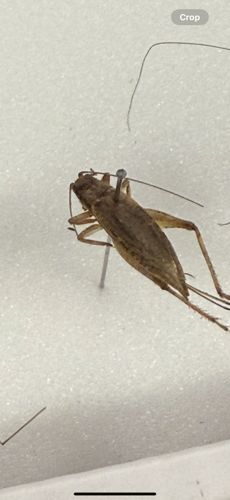Cricket (likely Field Cricket or House Cricket)
Scientific Name: Gryllus (Field Cricket) or Acheta domesticus (House Cricket)
Order & Family: Orthoptera, Gryllidae
Size: (13-25 mm) 0.5 - 1 inch in length

Natural Habitat
Field crickets are typically found outdoors in fields, grasslands, lawns, and under rocks/logs. House crickets often live indoors in warm, dark places like basements, utility rooms, or wall voids, but can also be found outdoors in similar environments to field crickets.
Diet & Feeding
Omnivorous. They consume a wide variety of plant matter, seeds, fruits, fungi, and sometimes other insects, decaying organic matter, or even fabrics and paper when indoors.
Behavior Patterns
Nocturnal. Famous for the chirping sound produced by males rubbing their wings (stridulation) to attract mates. They are generally solitary but can be found in groups, especially house crickets. They have strong jumping legs. Life cycle involves egg, nymph, and adult stages.
Risks & Benefits
Risks: Can be considered pests when indoors due to their chirping, consumption of fabrics/paper, and potential damage to plants. They can also transfer pathogens, though this is rare. Benefits: Serve as a food source for many animals (birds, reptiles, small mammals) and can aid in decomposition of organic matter. They are also raised commercially as pet food.
Identified on: 9/19/2025